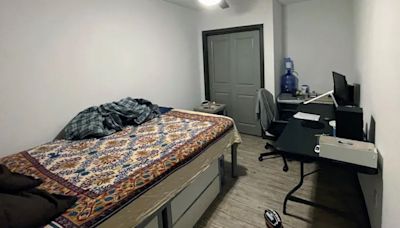Search results
Events
- JUN7MusicMotion City Soundtrack - I Am the Movie 20th Anniversary TourScoot Inn7:00 PMJUN7
 MiscellaneousMy H.E.B.Hyde Park Theater8:00 PM
MiscellaneousMy H.E.B.Hyde Park Theater8:00 PM - JUN7
 MusicJon Muq04 Center8:00 PMJUN7
MusicJon Muq04 Center8:00 PMJUN7 MusicMax StallingGruene Hall8:00 PM
MusicMax StallingGruene Hall8:00 PM - JUN8SportsMonster JamMoody Center ATX7:00 PMJUN8
 MiscellaneousLucyCome and Take It Live7:00 PM
MiscellaneousLucyCome and Take It Live7:00 PM
Austin is the southernmost state capital in the contiguous United States and is considered a Gamma-level global city as categorized by the Globalization and World Cities Research Network. [15] As of 2021, Austin had an estimated population of 964,177, [16] up from 961,855 at the 2020 census. [17] .
- List of People From Austin, Texas
This is a list of notable past and present residents of the...
- Colorado River
The Colorado River is an approximately 862-mile-long (1,387...
- Williamson County, Texas
Confederate statue at Williamson County courthouse A part of...
- Austin Community College
The Austin Community College District (ACC) is a public...
- List of People From Austin, Texas
- Overview
- History
- The contemporary city
Austin, city, capital of Texas, U.S., and seat (1840) of Travis county. It is located where the Colorado River crosses the Balcones Escarpment in the south-central part of the state, about 80 miles (130 km) northeast of San Antonio. Austin’s metropolitan area encompasses Hays, Williamson, Bastrop, and Caldwell counties, including the cities of Roun...
The state’s fourth largest city, Austin originated as the riverside village of Waterloo, in a buffalo-hunting region occupied by Tonkawa and Comanche peoples. In 1839 it was selected by scouts as the site for the permanent capital of the Republic of Texas and renamed to honour Stephen F. Austin, father of the republic. By 1840 Austin was incorporated, with 856 residents. When Mexican invasion threatened Texas in 1842, the government moved to Houston, but the town’s citizens, determined to keep Austin the capital, staged the so-called Archive War, forcibly retaining government records. The government returned to Austin in 1845, the year in which Texas was admitted to the United States. Austin’s pink granite State Capitol (1888), modeled after the U.S. Capitol, succeeded an earlier structure (burned 1881).
Britannica Quiz
U.S. State Capitals Quiz
The city flourished as a trading centre for ranchers and farmers after the arrival of the Houston and Texas Central Railroad and the construction of a permanent bridge across the Colorado River in 1871. A flood in 1900 caused widespread destruction, including the collapse of the bridge. With the harnessing of the river for flood control and power in the early 20th century, industry began to develop. Austin experienced dramatic growth during the 1990s, fueled mainly by high-technology industries.
Business, research and development, and manufacturing concerns involving computers, computer equipment, semiconductors, telecommunications, software, and biotechnology are among the city’s major employers. Government, education, and health care services are also primary economic factors. Railroads play an important role in trade, transporting most international cargo to international ports. Austin-Bergstrom International Airport opened in 1999 on the site of a former U.S. Air Force base.
The city’s population is ethnically diverse. Less than half of its people are of European descent, more than one-third of the population is Hispanic, and African Americans and Asian Americans each constitute slightly less than one-tenth of the population. Austin’s educational resources, particularly the University of Texas (1881), which has its main campus there, have contributed to growth. Other educational institutions include Huston-Tillotson College (1875), St. Edward’s University (1885), Concordia University at Austin (1926), and Austin Community College (1972).
At dusk, portions of the central city are lighted by “artificial moonlight” from mercury vapour lamps atop 17 165-foot (50-metre) tall towers (erected in 1894). The O. Henry Home and Museum is housed in what was O. Henry’s residence from 1893 to 1895, and the Elisabet Ney Museum, situated in her former studio, houses a collection of Ney’s sculptures; Ney created many life-size figures, including those of Stephen F. Austin and Sam Houston standing in the national and state capitols. The French Legation Museum (1841) was built by French chargé d’affaires Alphonse Dubois de Saligny, who was to represent the French government in the Republic of Texas; if he occupied the house at all, it was probably for a very short period. The Lyndon Baines Johnson Library and Museum (1971), situated on the campus of the University of Texas, contains archives, documents, and memorabilia of Johnson’s public career. The Bob Bullock Texas State History Museum (2001) showcases exhibits on the state’s history. The Jack S. Blanton Museum of Art, on the university campus, has a notable collection of Latin American art. Other facilities include the Austin Museum of Art, the Mexic-Arte Museum, and the Umlauf Sculpture Garden & Museum. The city supports an array of cultural organizations including a professional symphony orchestra, an opera company, and a ballet troupe, as well as a variety of art galleries and theatre groups.
Are you a student? Get Britannica Premium for only 24.95 - a 67% discount!
Learn More
Austin is known for its vibrant music scene. Formerly a centre of country and blues music, it now celebrates a variety of genres including rock, folk, jazz, and Latino music. More than 100 live music venues are centred primarily around the Warehouse District and Sixth Street, and a long-running public television series, Austin City Limits, showcases musical talent. Dozens of local recording studios and record labels make significant economic contributions. The South by Southwest Conference, devoted to music, film, and interactive media, is held each year in March. The city is also a favourite moviemaking location, and it is home to many artists associated with music and film.
- The Editors of Encyclopaedia Britannica
May 3, 2024 · With more than 300 days of sunshine, it's no surprise Austinites and many of Austin's top activities are outdoors. From Zilker Metropolitan Park to the Butler Hike and Bike Trail to Mount...
- Make your first stop the Austin Visitor Center and get insider tips on the best Austin has to offer, hop on a tour and shop locally made items. You can also check out the online Gift Shop for Austin-themed goodies.
- Try Austin’s favorite food: tacos! Some of the best are served up by Veracruz All Natural, Fresa’s Chicken al Carbon and Torchy’s Tacos.
- Bike or hike along the 10-mile Ann and Roy Butler Hike-and-Bike Trail at Lady Bird Lake, which winds along the shoreline and boasts panoramic views of Austin’s skyline.
- Fall brings exciting events to Austin. Tune in for this year's hybrid edition of the annual Texas Book Festival, held November 11-12; explore galleries, museums and artist workshops around Austin at the Austin Studio Tour, November 4-19; and get a jump on your holiday shopping at the Blue Genie Art Bazaar, running from November 17 through Christmas Eve.
3 days ago · Home to unique attractions and world-class museums, Texas' capital city has a soundtrack all its own. Spend a day exploring sculpture gardens and historic homes, zipline through the Hill Country or give the kids a hands-on experience at a number of STEM museums. Discover Austin attractions.
People also ask
How did Austin get its name?
Where is Austin Texas located?
Where did Austin Texas come from?
How many people live in Austin Texas?
Located in Central Texas on the eastern edge of the American Southwest, Austin is the capital of the state of Texas, the Lone Star State. The city dates back to the 1830s, when the first Anglo-American settlers arrived in the area, then part of Mexico.
Apr 24, 2024 · Keep things wallet-friendly with these free experiences. This article was first published Jul 26, 2021 and updated Apr 24, 2024. Legendary live music, bouncing bars, epic hikes and delicious BBQ – here's our list of the top things to do in Austin right now.













































